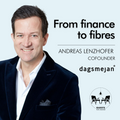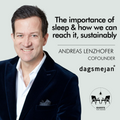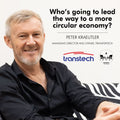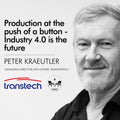Fashion of the Foreseeable Future: What It Could Look Like After Lockdown
By now, the novelty of wearing sweatpants on Zoom meetings has worn off. Nostalgia for rowdy Sunday brunches has crept in.
Your new go-to accessories: a stylish designer face mask with matching pocket-size hand-sanitizer, personalized to compliment your monogrammed handbag.
But, you long to wear that new cashmere sweater you recently ordered online because it is so soft, and so very special.
With countries worldwide settling into extended periods of social distancing with working-from-home as the norm, there is a simmering sense of uncertainty. While the world adapts to this new kind of normal, what is really in store for fashion in the future? What will it really look like after lockdown?
Photo by cottonbro from Pexels
OUR COLLECTION PRIORITIZES CRAFTMANSHIP
Karim Guest New York and the collection of designers at THE GUESTLIST epitomize slow fashion that is gentler to the environment, supports social responsibility, and champions the United Nations’ Sustainable Development Goal of sustainable consumption and production by 2030. Our collection prioritizes craftmanship, quality over quantity, and is created on a made-to-order basis.
Photo by cottonbro from Pexels
The Evolution of Personal Protective Equipment (PPE) and Face-Mask Fashion
Clothing that physically protects the body is nothing new to industrial and medical workers, but in the age of COVID-19, protective wear has been embraced across society. With public health officials recommending - and in some cases enforcing - the use of face masks, they are quickly becoming a staple accessory. The fashion industry is adapting to this demand for protective wear.
Medical masks are held in place with straps that go around the head or ears. They provide high filtration and adequate breathability. Filtering facepiece respirators (FFR) also balance filtration and breathability. However, they filter more challengingmicrometer solid particles. This makes them ideal for frontline workers, and those who are involved with in-person COVID-19 contact.But, as for other members of society, surgical N95 masks are not necessary. These should be left to medical professionals.
Clothing that physically protects the body is nothing new to industrial and medical workers, but in the age of COVID-19, protective wear has been embraced across society. With public health officials recommending - and in some cases enforcing - the use of face masks, they are quickly becoming a staple accessory. The fashion industry is adapting to this demand for protective wear.
Medical masks are held in place with straps that go around the head or ears. They provide high filtration and adequate breathability. Filtering facepiece respirators (FFR) also balance filtration and breathability. However, they filter more challenging micrometer solid particles. This makes them ideal for frontline workers, and those who are involved with in-person COVID-19 contact. But, as for other members of society, surgical N95 masks are not necessary. These should be left to medical professionals.
Alas, the days of fogged-up spectacles are far from over...
THE EVOLUTION OF PERSONAL PROTECTIVE EQUIPMENT (PPE) AND FACE-MASK FASHION
Clothing that physically protects the body is nothing new to industrial and medical workers, but in the age of COVID-19, protective wear has been embraced across society. With public health officials recommending - and in some cases enforcing - the use of face masks, they are quickly becoming a staple accessory. The fashion industry is adapting to this demand for protective wear.
Medical masks are held in place with straps that go around the head or ears. They provide high filtration and adequate breathability. Filtering facepiece respirators (FFR) also balance filtration and breathability. However, they filter more challenging micrometer solidparticles. This makes them ideal for frontline workers, and those who are involved with in-person COVID-19 contact.But, as for other members of society, surgical N95 masks are not necessary. These should be left to medical professionals.
Clothing that physically protects the body is nothing new to industrial and medical workers, but in the age of COVID-19, protective wear has been embraced across society. With public health officials recommending - and in some cases enforcing - the use of face masks, they are quickly becoming a staple accessory. The fashion industry is adapting to this demand for protective wear.
Medical masks are held in place with straps that go around the head or ears. They provide high filtration and adequate breathability. Filtering facepiece respirators (FFR) also balance filtration and breathability. However, they filter more challengingmicrometer solid particles. This makes them ideal for frontline workers, and those who are involved with in-person COVID-19 contact.But, as for other members of society, surgical N95 masks are not necessary. These should be left to medical professionals.
Clothing that physically protects the body is nothing new to industrial and medical workers, but in the age of COVID-19, protective wear has been embraced across society. With public health officials recommending - and in some cases enforcing - the use of face masks, they are quickly becoming a staple accessory. The fashion industry is adapting to this demand for protective wear.
Medical masks are held in place with straps that go around the head or ears. They provide high filtration and adequate breathability. Filtering facepiece respirators (FFR) also balance filtration and breathability. However, they filter more challengingmicrometer solid particles. This makes them ideal for frontline workers, and those who are involved with in-person COVID-19 contact.But, as for other members of society, surgical N95 masks are not necessary. These should be left to medical professionals.
ALAS, THE DAYS OF FOGGED-UP SPECTACLES ARE FAR FROM OVER...
Instead, there is the option of a variety of non-medical masks. These kinds of masks do not provide the medical-grade protection that their counterparts do, but it is said that they help to reduce the spread of the virus - with the added ability of becoming a way to express your style.
Brands have seized the opportunity and many have emerged with designer masks. Designers in China have come out with fashionable protective clothing such as a windbreaker and a sleeveless piece that covers over the head and shoulders - providing an extra barrier. The idea is that when worn with a mask and a pair of goggles, no bare skin is being exposed.
Designer Liu Wei, image from South China Morning Post
While wearing hazmat suits for air-travel is becoming more of a common-place occurrence as borders reopen, these are less practical for everyday use. (Unless looking like a beekeeper is secretly your thing. In that case, it’s your time to shine, honey!)
Rather, future fashion could see the inclusion of antibacterial fabrics and pollen- and smog-resistant clothing.
One thing’s for sure: masks and gloves are here to stay, for the immediate future, at least. So we can all use it as an excuse to practice smizing.
Instead, there is the option of a variety of non-medical masks. These kinds of masks do not provide the medical-grade protection that their counterparts do, but it is said that they help to reduce the spread of the virus - with the added ability of becoming a way to express your style.
Brands have seized the opportunity and many have emerged with designer masks. Designers in China have come out with fashionable protective clothing such as a windbreaker and a sleeveless piece that covers over the head and shoulders - providing an extra barrier. The idea is that when worn with a mask and a pair of goggles, no bare skin is being exposed.
Designer Liu Wei, image from South China Morning Post
Instead, there is the option of a variety of non-medical masks. These kinds of masks do not provide the medical-grade protection that their counterparts do, but it is said that they help to reduce thespread of the virus - with the added ability of becoming a way to express your style.
Designer Liu Wei, image from South China Morning Post
Brands have seized the opportunity and many have emerged with designer masks. Designers in China have come out with fashionable protective clothing such as a windbreaker and a sleeveless piece that covers over the head and shoulders - providing an extra barrier. The idea is that when worn with a mask and a pair of goggles, no bare skin is being exposed.
While wearing hazmat suits for air-travel is becoming more of a common-place occurrence as borders reopen, these are less practical for everyday use. (Unless looking like a beekeeper is secretly your thing. In that case, it’s your time to shine, honey!)
Rather, future fashion could see the inclusion of antibacterial fabrics and pollen- and smog- resistant clothing.
One thing’s for sure: masks and gloves are here to stay, for the immediate future, at least. So we can all use it as an excuse to practice smizing.
While wearing hazmat suits for air-travel is becoming more of a common-place occurrence as borders reopen, these are less practical for everyday use. (Unless looking like a beekeeper is secretly your thing. In that case, it’s your time to shine, honey!)
Rather, future fashion could see the inclusion of antibacterial fabrics and pollen- and smog-resistant clothing.
One thing’s for sure: masks and gloves are here to stay, for the immediate future, at least. So we can all use it as an excuse to practice smizing.
A Move to Comfort
The global pandemic has sparked a greater focus on health and wellbeing. Multiple weeks - and months for some - spent indoors means one thing for fashion choices: comfort is now the key. Not surprisingly, there has been a remarkable surge in sales for loungewear and activewear with searches for “sweatpants” increasing by 85% in recent weeks. Fair-trade and eco-friendly loungewear have become all the rage.
The global pandemic has sparked a greater focus on health and wellbeing. Multiple weeks - and months for some - spent indoors means one thing for fashion choices: comfort is now the key. Not surprisingly, there has been a remarkable surge in sales for loungewear and activewear with searches for “sweatpants”increasing by 85% in recent weeks. Fair-trade and eco-friendly loungewear have become all the rage.
But, what does this mean post-lockdown?
Quite simply, the need for versatility has been shoved into the spotlight.
Long-term effects could see the inclusion of multi-functional clothing that will enable people to move throughout their daily activities with ease. Pieces like the Ailey Sports Coat transition effortlessly throughout the day - from picking up your almond milk latte after your early morning pilates class over your activewear, to sitting in online Zoom boardroom meetings, to comfortably nestling into your couch with a glass of red, unwinding before bedtime.
Investment Over Impulse
COVID-19 is making big changes in the fashion industry. But the extra time at home has allowed people to make changes themselves.
Wardrobes have been Marie Kondo'd and people are warming to the idea of seasonless fashion. Besides, we’re all struggling enough as it is keeping up with what day of the week it is, who has time to keep track of seasons too?
Shopping for trendy items that only last one season is being replaced with sustainability-conscious, timeless pieces that offer longevity. It has been found that 72% of women are willing to pay more for higher-quality items in their wardrobe. People are making more considered purchases and moving away from impulse buys. (But that’s not to say that the occasional online spending spree won’t make you feel better in the impending doom of life itself.)
COVID-19 is making big changes in the fashion industry. But the extra time at home has allowed people to make changes themselves.
Wardrobes have been Marie Kondo'd and people are warming to the idea of seasonless fashion. Besides, we’re all struggling enough as it is keeping up with what day of the week it is, who has time to keep track of seasons too?
Shopping for trendy items that only last one season is being replaced with sustainability-conscious, timeless pieces that offer longevity. It has been found that 72% of women are willing to pay more for higher-quality items in their wardrobe. People are making more considered purchases and moving away from impulse buys. (But that’s not to say that the occasional online spending spree won’t make you feel better in the impending doom of life itself.)
Investing in high-quality pieces that will last you a lifetime is the way forward.
At THE GUESTLIST, all of our pieces are made with ethically-sourced, high-quality fabrics. The incomparably soft and luxurious feel of our pieces offers ultimate comfort. Our designs are an investment that will last you a lifetime and beyond - a promise that our Cashmere Spa delivers by rejuvenating and reviving your favorite cashmere pieces.







